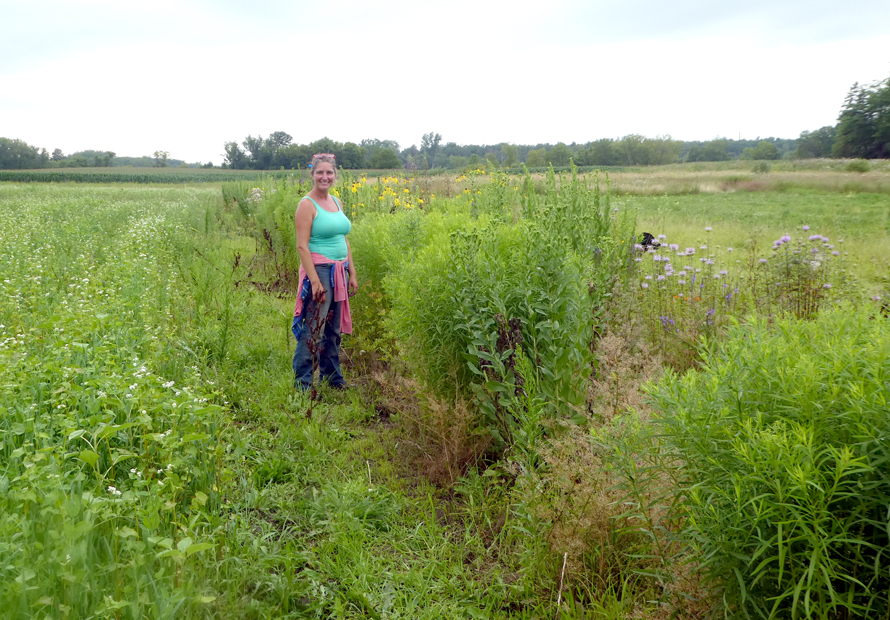Flowering insectary strips are an excellent strategy for supporting pollinators and other beneficial insects on farms. Planted along field edges or directly within fields, these strips help ensure that flowering habitat is in close proximity to the crop fields where pollination and pest control services are most needed.
Insectary strips can be temporary (annual) or permanent (perennial) and native or non-native, depending on the goals and situation at hand. Temporary insectary strips are typically composed of non-native flowers and herbs that provide bloom very quickly and do not require much weed control prior to planting (since the planting will be cultivated at the end of the growing season). Plants such as cosmos, dill, cilantro, basil, mustards, buckwheat, and dwarf sunflowers are examples of what may be suitable for an annual insectary strip.
This insectary strip uses a mix of annuals and herbs, which provides cut flowers and additional offerings for the farms CSA customers.
In contrast, permanent insectary strips are composed of native wildflowers and grasses that take longer to establish and come at a higher initial cost, but do not need to be replanted every year. Additionally, native plants are often better suited to meet the needs of specialist bees who may only collect pollen from certain native plants, and of butterfly and moth larvae who often have highly specific feeding requirements on select native plant species ( such as monarchs’ dependence on milkweeds).
From the Field: Uproot Farm, an organic vegetable CSA operation in Princeton, Minnesota, has worked with the Xerces Society to incorporate a wide variety insectary plantings throughout their vegetable fields. These strips range from mass plantings of sunflowers integrated among brassica crops to permanent strips of native wildflowers and bunch grasses on the edges of crop fields (shown below). As a grower, Sarah Woutat of Uproot Farm has been extremely pleased with these plantings, noting both the beauty they add to the farm as well as the amazing diversity of beneficial insects that they support.

Farmer Sarah Woutat of Uproot Farm stands next to a 1 year old insectary strip.
Masked bees, sweat bees, mining bees, bumble bees, and monarchs are commonly observed on the permanent insectary strips, while the temporary strips support numerous beneficial insects for pest control such as parasitoid wasps, predatory wasps, soldier beetles, fireflies, and lady beetles.
Where to plant: Within or around fields.
Services provided: Pollination; Pest Control; Erosion Control; Windbreak; Aesthetics.
Additional information:
Farming with Beneficial Insects
Flower Flies (Syrphidae) and Other Biological Control Agents for Aphids in Vegetable Crops

